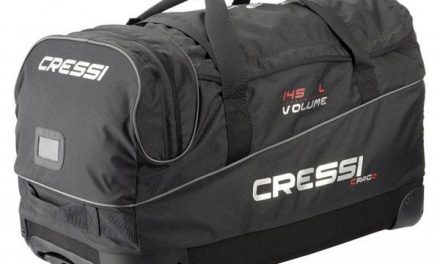Choosing the right secondary dive light is an important part of prepping for a dive. It is important to know how to compare secondary dive lights to best meet your diving needs. While all secondary lights should be relatively small and fit into a BC pocket, the similarities stop there.
Beam Strength (Lumens)
A light is only as good as its brightness, but in the water, a too-bright light impacts the environment, particularly the creatures in it. If you’re looking to see marine life, a too-bright light might just scare them away. But if you’re looking for optimal visibility for wreck diving, then something bright might be more to your liking.
Most secondary lights operate in the range of 25 – 100 lumens, but with smaller and more powerful lights being made, options such as the Mini-Q40, MK2 or SL3 eLED L2 can offer 250 to 425 lumens. The XTAR series of secondary lights go as high as 1100 lumens.
Ultimately, your secondary light should be bright enough to act as your primary light in a pinch, but dim enough that you can use it with your primary light without over-lighting the area and reducing visibility.
Beam Width
As a secondary light is principally a back-up on night dives, choosing the right beam is important. A wide beam may provide more light in an immediate area, but it doesn’t travel as far and may be impacted by sediment clouds if you’re diving near the sea floor. This is also usually the purpose of your primary dive light – to cast a wide beam and illuminate the area – so a narrow beam is usually preferable in a secondary light as it can be used to investigate crevasses, cracks, and ledges, act as a back up on night dives or in caves or wrecks, or function as a signal for boats or other vessels from a distance. Good models to consider include the XTAR series, the Mini Q40, SL3 and SL4.
Battery Life
A secondary light should have good battery life as well. Depending on the length of your dives and the power draw for your light, most flashlights should provide upwards of 5 hours of solid lighting. XTAR series lights vary based on usage, from 2 hours at peak illumination (1100 lumens) to 48 hours at the lowest levels (60 lumens). The SL4 eLED offers 400 lumens with a 10h burn time.
Other Specs
It is also important to make sure you compare depth rating, enclosure protection, beam distance and weight when factoring in your choice of secondary dive light. These are more personal choices or dependent on the type of diving you intend to do or the depth you plan to go to (most secondary lights are usually good for 100m – 150m)
Remember: always make sure to take the right equipment with you on that dive!




